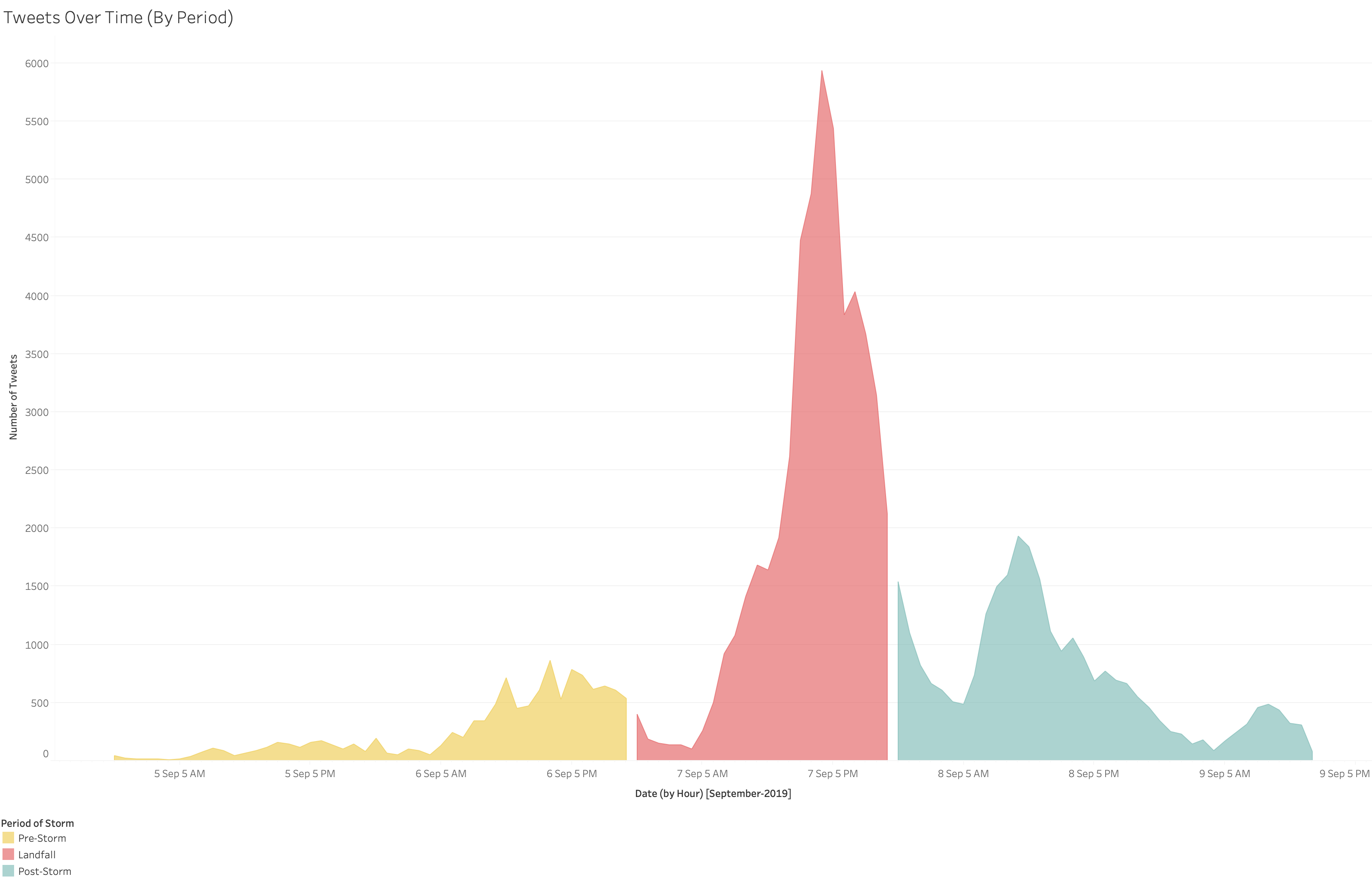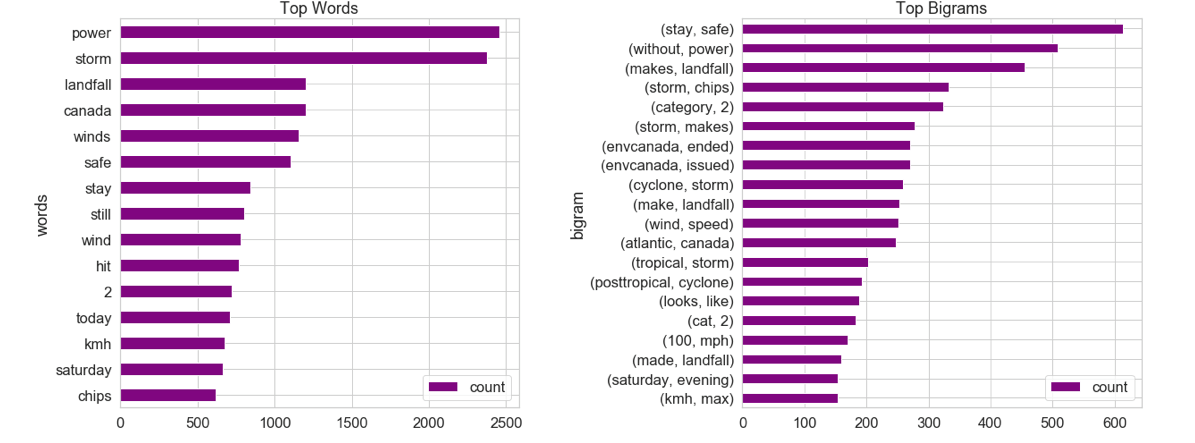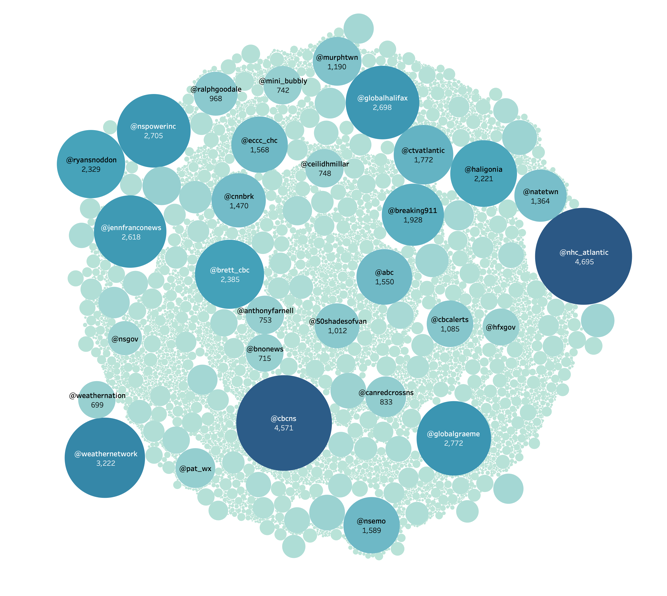Ouragan Dorian : les trois phases d’une crise

Articles suggérés
Sur des sujets similaires
L’ouragan Dorian a touché les côtes canadiennes le 7 septembre dernier. Bien que les conséquences ont été beaucoup moins dramatiques que dans les Bahamas quelques jours plus tôt, la tempête a causé des dégâts significatifs en Nouvelle-Écosse.
Durant la tempête, notre équipe était sur le qui-vive pour observer comment les organisations réagissaient, et a pu identifier quelques leçons importantes en matière de communication en temps de crise. Karen White, vice-présidente adjointe, et Elizabeth MacRae, directrice adjointe à notre bureau de Halifax, partagent ce qu’elles retiennent de cette expérience. (L’article est en anglais.)
———
Hurricane Dorian hit Canadian shores Saturday, September 7 and starting Sunday morning, Nova Scotians have been cleaning up branches, assessing the damage, and sharing their storm experiences. Though far less damaging than the devastation suffered in the Bahamas days earlier by the same weather system, Dorian was a big one: at one point, 400,000 customers were without power. Public schools and businesses closed, and the province’s major utility, Nova Scotia Power, has brought in over 1,000 contractors from across Canada and the United States to get power back online as fast as possible.
Throughout Dorian, our team was on standby for issues and crisis moments, and we’ve identified some teachable moments for crisis teams and communicators. What can we draw from this experience? First, let’s look at the data.

After the storm we were able to examine over 90,000 tweets related to Dorian. Search terms included “Hurricane Dorian”, “Dorian”, “storm”, “category 2”, and other storm-related terms.
Phase 1: Preparation
Not every situation comes with an advanced weather warning. But in this case, Phase 1 was really all about preparation. Several days before the storm hit, Nova Scotians were asked to ride out the storm at home and plan for 72 hours of essentials through extensive communications efforts—both online and off—from a variety of different partners and agencies.
Nova Scotians shared social moments of connection and bonded over #stormChips (almost 2,000 individual mentions in the first two days alone). We turned to each other and the news for information, and as the storm picked up, we urged and echoed safety and responsibility.

Phase 2: During the crisis
Conversations raged with the storm and shifted from preparedness to what was happening around us. Users announced the path and timing of the storm, power outages and other service disruptions, what they were doing, how they were coping, and what they were seeing outside. Damage to infrastructure drew the most attention and would set the stage for social content into the aftermath and restoration.
As happens in the age of social and mobile, sources of information authority dispersed. While people turned to official government and first-responder channels for news and the media, they were equally influenced by the social content of those in their networks and across the province.

During the storm, Twitter activity rose to over 2,000 tweets per hour, up from about 250 per hour prior to the storm. The above image showcases the social media influencers throughout the storm. Users received their news from a variety of sources, including government officials, meteorologists, local reporters, and additional local influencers who had a large reach for sharing information.
Phase 3: The aftermath
Sunday dawned with a new conversation: people sought out authority and influencers to learn of the damage, what was open and what was closed, if their power would be restored and when, and what the cleanup would look like.
Once the storm passed, Nova Scotians showed their true colours by coming together to help each other in a time of need. People were checking in on their neighbors, beginning to clear the debris, and many businesses opened their doors for hot meals and offered Nova Scotians a place to recharge and shower.
Many organizations earned praise for supporting their employees in challenging times, and used their social platforms to show compassion, echo safety, and demonstrate understanding. In a moment of crisis, we often see people come together, react, plan, and engage with each other outside of the norm. Organizations can take a page from this strategy.
So what does this mean for organizations?
A thoughtful approach to communicating in times of crisis requires organizations to understand the different phases of an emergency and what kinds of information audiences are looking for. A consideration for all phases of an emergency is good communications planning to understand the right information for your audiences depending on the relevant phase of the crisis response.
The preparation phase is meant for just that—sharing information about how to prepare and providing information and communications to ensure the safety of employees and their families, as well as customers or other stakeholders.
During an emergency response, timely and regular updates are essential to keeping people informed about the incident and remaining safe. As people turn more and more to social media and their peers for information, ensuring this information is communicated in an open and timely manner will help ensure these critical messages are being shared properly.
Finally, during the recovery phase, even as frustrations may rise, there is an opportunity for organizations to demonstrate how they are being good corporate citizens and supporting recovery from the incident. Content on social media shows very positive engagement for organizations that show up in a supportive and positive way.
Curious if your organization is prepared to weather its own crisis situation? We can help.
NATIONAL is often called upon to support organizations and communities that have experienced a natural disaster or catastrophic event. Our team of crisis experts help organizations through their most challenging times. We are certified in Incident Command System (ICS), and specialize in research and monitoring during issues and crisis moments.
——— Elizabeth MacRae était directrice principale, Recherche au Cabinet de relations publiques NATIONAL




